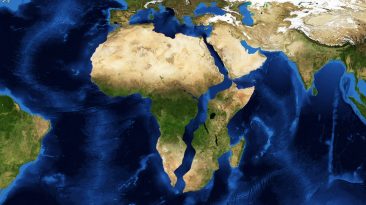There are sunsets on other planets even more spectacular than the ones on Earth. What if we could see not just one, but two suns falling below the Earth’s horizon? Would our planet get much warmer with two stars heating it up? Would we ever experience nighttime again? Could our binary star system be able to sustain life?
Here’s what would happen if we had two suns.
Not all star systems form around a single star. In fact, binary or multiple star systems appear to be more common than the ones with a single star.
Some scientists even suggest that our Sun once had a star companion – a long-lost dwarf star called Nemesis. It broke free of the Sun’s gravity and melted into the Milky Way billions of years ago.
Our search for Earth-size planets throughout the galaxy showed us that not only are most star systems binary, but they also have habitable zones and planets within them.
It looks like the Earth could sustain life with two suns, instead of just one. But only under certain conditions.
In a binary star system, Earth’s fate would depend on many factors – from the masses of the stars to their position relative to Earth and each other.
Chances are high, that Earth’s orbit would be very unstable. If one of the suns was bigger and brighter, and had a much stronger gravitational impact on us, that sun could pull the planet towards itself. We’d get pretty crispy before disappearing in its solar flares.
On the other hand, if neither stars’ gravitational pull was strong enough, the Earth would fly out into space. We’d become one of those rogue planets that travel the Universe all alone with no star system to call home.
[dx_custom_adunit desktop_id=”RTK_CDE4″ mobile_id=”RTK_SUFd”]Let’s assume that the Earth’s orbit would be stable. This would be possible if the Earth orbited just one of the suns. But that’s no good for complex life on the planet. Because at some point the stars would face both sides of the planet at the same time.
Not only that would that take away our nights, but it would also bring double doses of UV radiation and solar winds. No sunscreen would prevent you from getting toasted by two suns.
The Earth’s orbit could be stable if the planet rotated around the two stars. The stars would have to be close together, and the Earth’s orbit would be further away.
Just how far away? Most likely, beyond the habitable zone, where the heat of the suns wouldn’t be enough to keep our water in a liquid state. The planet would turn into a frozen, lifeless rock.
Feeling hopeless yet? Well, we have some good news for you. The best-case scenario for our planet would be if we replaced our Sun with two closely matched stars, each half as bright as the Sun. This would keep the planet warm enough to sustain life.
Because the total gravity of the two stars would be stronger, it would take the Earth 280 days instead of 365 to make a whole circle around them. A year on Earth would be shorter, but not dramatically.
The distance between the stars would have to be less than 15 million kilometers apart (9 million miles). That way, the orbits of all the planets in our system would be stable. Even Mercury’s.
But let’s play safe and assume the distance between the stars was about 5 million kilometers (3 million miles).
In that scenario, the two stars would orbit each other once every ten days. Every five days, one star would pass in front of another. From Earth, that would look like a solar eclipse, but instead of our Moon blocking the Sun, it would be one star blocking another one. And instead 7.5 minutes, that eclipse would last for about 6 hours.
Under those conditions, the Earth could be just fine orbiting two suns. The only question is whether the Earth would have formed in a binary star system in the first place.
As far as we know, the smallest known planet circling two suns is a gas giant much bigger than Earth.
Maybe there is a small, rocky planet like Earth orbiting two suns somewhere in the Universe. We just haven’t found it yet.
It might even sustain life, intelligent enough to send a signal to our planet.
Subscribe to What-If on Youtube or follow the show on Facebook Watch.
[expand title=”Sources”] [/expand]



























